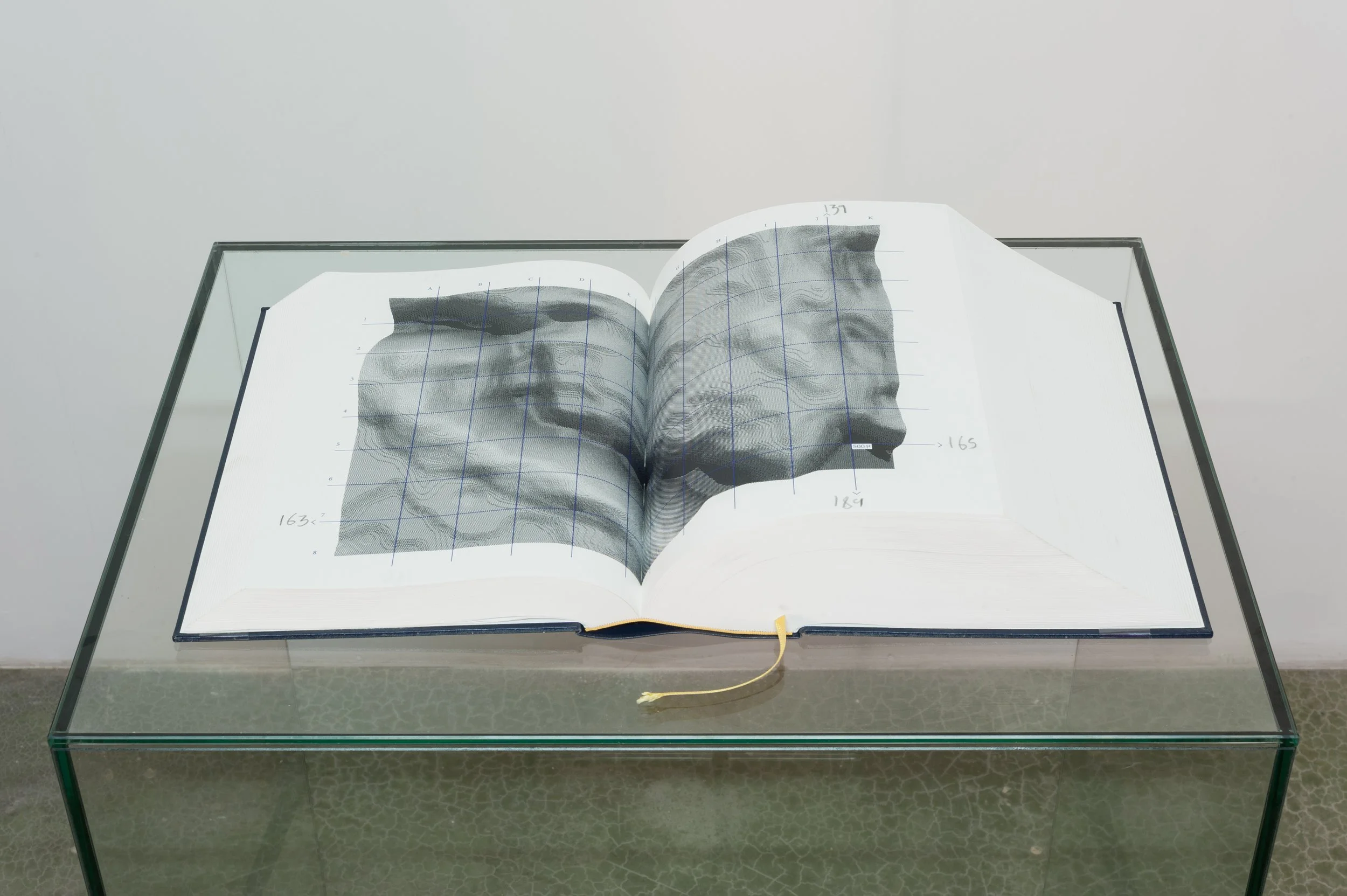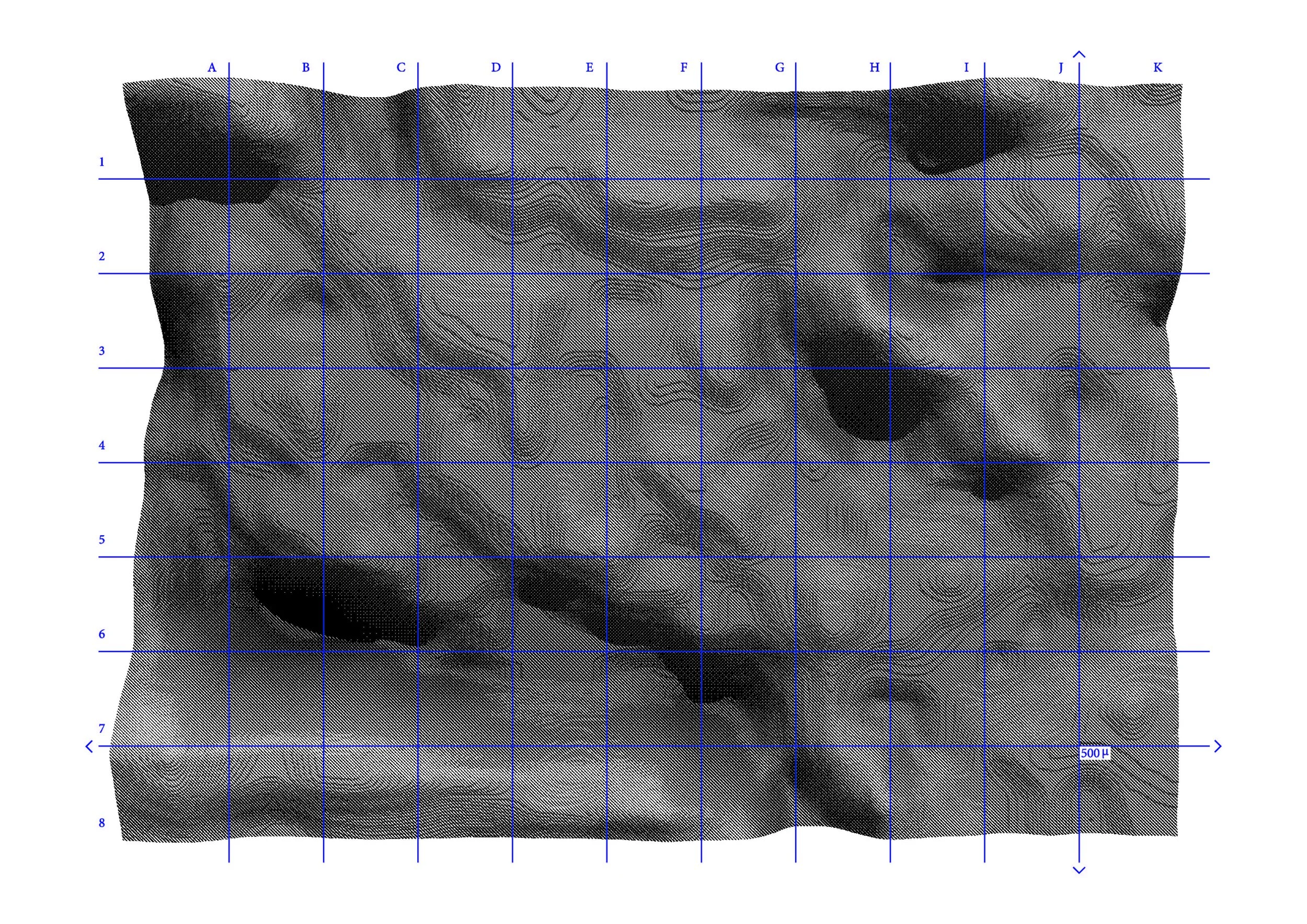Macrotopographic Atlas, Palace of the Museums of Modern Art, West Wing, Level One, Recess of the Three Domes
Micron scale Atlas of a part of the ground from Le Palais de Tokyo (Paris). Artisanal bookbinding with golden leave on the cover.
Collaboration with Armelle Couillet (cartographer) & Clovis Duran (graphic designer).
View of the exhibition, The Galapagos principle, Palais de Tokyo, 2013.
Max Bondu applies a speculative aesthetics of discovery, which is contemplated, interpreted and distorted through the space-time vortex of a mimetic mirror. If his body of works frequently operates in the vicinity of the replica, the specific field allocated to the latter produces unexpected shapes arising from empirical reinvention or a counter-employed tautology, both eventually generating divergent angles of approach. For The Galápagos Principle, the artist proposes a specific production hallmarked by these distinctive features typical of his work. On a formal level, what is involved is an atlas, on a greatly enlarged scale, of the unevennesses of the ground in a space located inside the Palais de Tokyo. The surface represented is identical to the open format of the book produced which, set on a see-through plinth, physically covers the space it refers to. The work’s title (Macrotopographic Atlas, Palace of the Museums of Modern Art, West Wing, Level One, Recess of the Three Domes) refers in a detailed way to this placement and confirms an analogy with a meticulous study with all the appearances of scientific mapping. The highly descriptive focus on an extremely ordinary perimeter evokes an ironical desire for mimetic exhaustiveness and overlapping calling to mind Georges Perec’s An Attempt at Exhausting a Place in Paris and the life-size map of the Empire, described by Jorge Luis Borges in On Rigour in Science. The excessiveness of these endeavours, which are as meticulous as they are futile, is here pushed to the limit; the obsessive application of seemingly scientific methods introduces a swing towards pseudo-science. As a topographical guide to the art institution that is as complete as it is irreverent, the document produced is intended to be not only equivalent, but above all incomparably superior to the original: in all of 1,250 pages, the iconolatry of the book covers the slightest irregularities of a considerably restricted territory, whose exploration on a micron (A thousandth of a millimetre /0.001 mm) scale gives rise to results whose practical usefulness is uncertain, even if constructed with a powerful critical and storytelling force.
Emile Ouroumov



